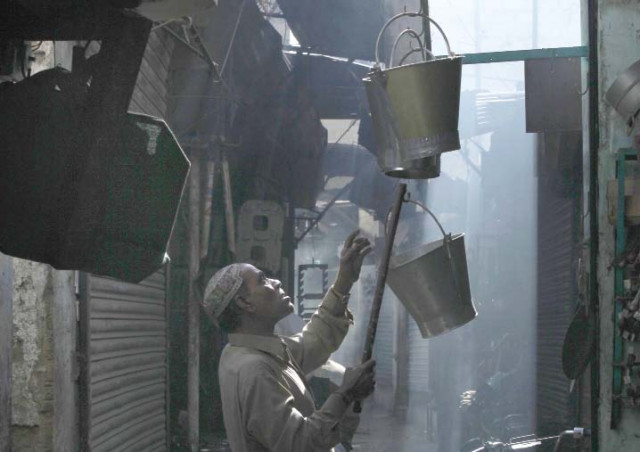
Nara estimated that 3.35 million illegal immigrants are living in the country and at least 2.5 million of them have settled in Karachi. There are over 100 migrant-concentrated residential areas in Karachi and most of these neighbourhoods are predominantly occupied by people from Afghanistan, Bangladesh and Burma.
According to Piler, in a survey conducted on 500 garment female workers in 2009 in Karachi, Bengali women were found with the highest salaries as compared to other communities. Most of these women work mainly because they head the household or because they are disparately economically disadvantaged.
“My husband went blind six years ago and could not work ... sometimes I could earn Rs20 to Rs30 per day for peeling shrimps,” said a Bengali woman, during the survey. “When I have no work, we have nothing to eat. Some people give us small money to survive.” On average, salaries range anywhere between Rs3,000 and Rs10,000 per month for these migrants.
At the launch of the Piler report, Sindh Labour Minister Ameer Nawab was the chief guest while the Human Rights Commission of Pakistan’s IA Rehman and labour leader Khursheed Ahmed also spoke.
The minister said that when he took charge only a fraction of the labour courts were functioning but now all of them were working. The government increased the minimum wage from Rs5,000 to Rs7,000 for unskilled workers and from Rs5,000 to Rs10,000 for skilled workers. Pensions have gone up Rs500 and dowry grants from Rs50,000 to Rs70,000.
Employment exchanges are working and around 147,000 applications have registered in 17 offices in Sindh of which 32,600 applicants have been given jobs. IA Rehman pointed out the toll the fight against terrorism has had on the worker, because more funds have been diverted to it. He pointed out that Ziaul Haq had tilted the labour policy towards the employer.
The statistics
The three major sectors that offer jobs are: 45 per cent for agriculture, 13 per cent industry and 34.3 per cent the services sector. The informal sector, which makes up 30 per cent of the economy — totally linked to the private sector — employs 73 per cent of the labour force.
Causes of decline
Industrial power outages in 2009 alone caused 535,000 jobs losses. Another 2009 study by the Child and Labour Rights Welfare Organisation, about the impact of the global economic recession on factory workers in Karachi found massive entrenchment in the garment factories. Three of the seven factories surveyed were completely shut down and 2,500 workers lost jobs.
Pakistan, classified as low-income country, has 84.6 per cent of its population earning less than $2 per day. A recent study states that 48.6 per cent of people are faced with food insecurity. Out of 130 districts, 80 are food insecure in the country, and of them, 45 are extremely food insecure.
The social security programmes are highly exclusionary: PESSI and the EOBI do not extend to farm workers and cover merely five per cent of the total workforce of 53 million.
Agriculture
None of the country’s labour law applies to agricultural workers. A recent survey of Sukkur district indicates a majority of farmers are subsistence farmers as 65 per cent have land holdings of up to 12.5 acres. In contrast, only five per cent of the farms are in the range of 25 acres to 100 acres. Large landholdings of 100 acres and above, totalling to 5.84 million acres are concentrated in less than one per cent of the total number of the farms, owned by a few landlords.
Workers in textile sector
According to a survey conducted on 500 garment female workers in Karachi, 99 per cent did not possess a written employment letter. Average income for a nine-member family was Rs5,000 per month. Data points to a significant 10 per cent child labour.
Published in The Express tribune, December 31st, 2010.


















COMMENTS
Comments are moderated and generally will be posted if they are on-topic and not abusive.
For more information, please see our Comments FAQ